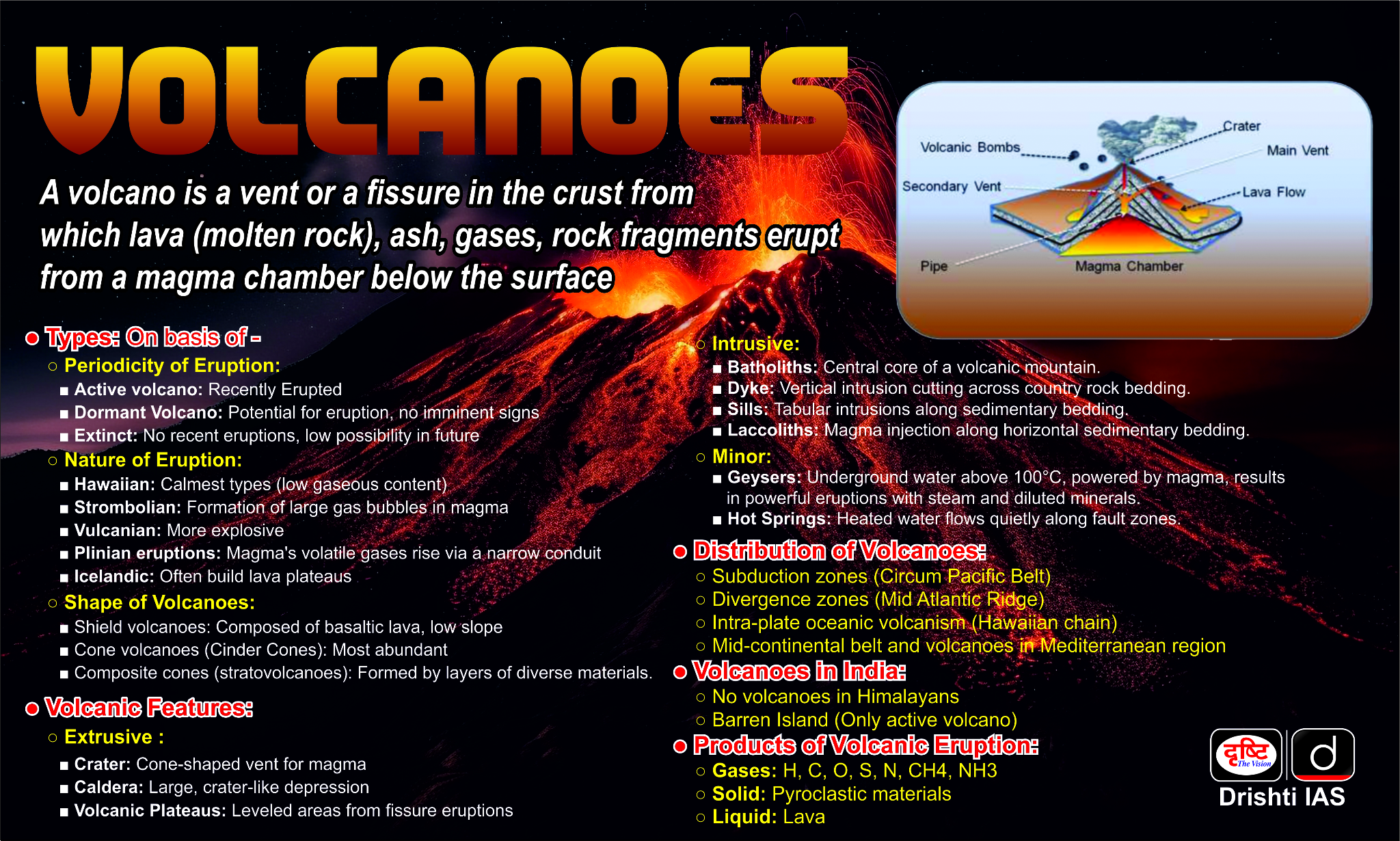Cold Lava | 20 Jun 2024
Why in News?
Recently, a cold lava erupted at Mt. Kanlaon Natural Park in the Philippines has sent rivers of cold lava, or “lahar”, flowing through a village miles away from the summit on the Negros Island.
What is Cold Lava?
- About:
- Cold lava, known as lahar in Indonesian, is a phenomenon where rain mixes with volcanic materials like ash, sand, and pebbles, forming a concrete-like substance.
- Lahar primarily travels along river valleys and can reach extremely high speeds of up to 75-80 kilometers per hour or even faster.
- Its flow can be either hot or cold, depending on its source and origin, and is primarily associated with stratovolcanoes.
- Stratovolcanoes are also called composite volcanoes because of their stratified layers of deposits that form the flanks of the volcano.
- Cold lava is considered more destructive and deadlier, due to its high density, abrasive nature, and ability to cause significant damage to structures and infrastructure.
- Formation:
- It can occur without volcanic eruptions, often triggered by heavy rainfall or landslides on the slopes of volcanoes covered in loose volcanic material.
- Volcanic eruptions themselves can generate lahars by melting snow and ice present on the volcano or through pyroclastic flows that mix with water.
- Eruptions often generate scorching hot clouds of gas and debris known as pyroclastic flows.
- Lake breakout floods caused by volcanic landslides can also transform into lahars as they erode and incorporate more debris and water, significantly increasing their volume and destructive potential.
What is the Difference Between Cold Lava and Normal Lava?
- Temperature Variation: Normal lava is extremely hot molten rock, while lahars are not molten and can vary greatly in temperature.
- Mixtures: Lava consists solely of molten rock, whereas lahars are a mixture of water and volcanic debris like ash, rocks, and sand.
- The composition of lahars, being a dense slurry rather than pure molten rock, allows them to flow faster and further from the volcanic source.
- Impact: Lahars can be more destructive and deadlier compared to regular lava flows because they can affect and devastate a much larger area due to their fluid, flowing nature and ability to incorporate more debris as they travel.
- This mobility and incorporation of extra material gives lahars the potential to increase massively in volume, compounding their destructive force.
Magma vs Lava
- Magma is the term used to denote the molten rocks and related materials seen inside the earth. A weaker zone of the mantle called the asthenosphere, usually is the source of magma.
- Lava is nothing but the magma above the earth's surface. Once this magma comes out to the earth's surface through the vent of a volcano, it is called the Lava.
Mud Volcano
- A mud volcano or mud dome is a landform created by the eruption of mud or slurries, water and gases.
- Mud volcanoes are not true igneous volcanoes as they do not produce lava and are not necessarily driven by magmatic activity.
- Mud volcanoes may range in size from merely 1 or 2 meters high and 1 or 2 meters wide, to 700 meters high and 10 kilometers wide.
UPSC Civil Services Examination, Previous Year Questions (PYQs)
Prelims
Q. Consider the following statements: (2018)
- The Barren Island volcano is an active volcano located in the Indian territory.
- Barren Island lies about 140 km east of Great Nicobar.
- The last time the Barren Island volcano erupted was in 1991 and it has remained inactive since then.
Which of the statements given above is/are correct?
(a) 1 only
(b) 2 and 3
(c) 3 only
(d) 1 and 3
Ans: (a)

